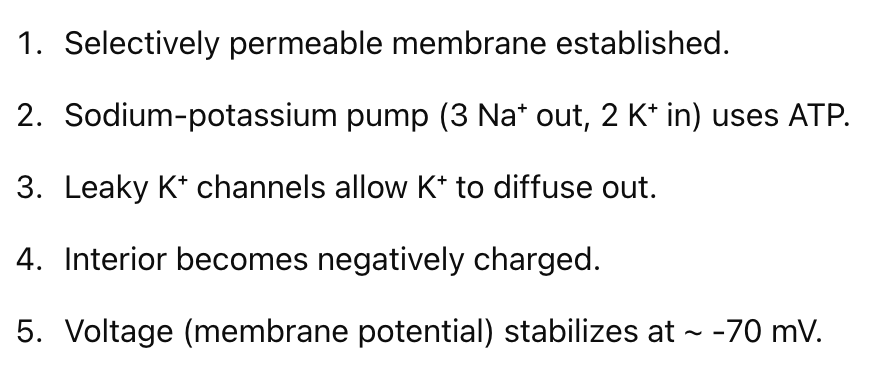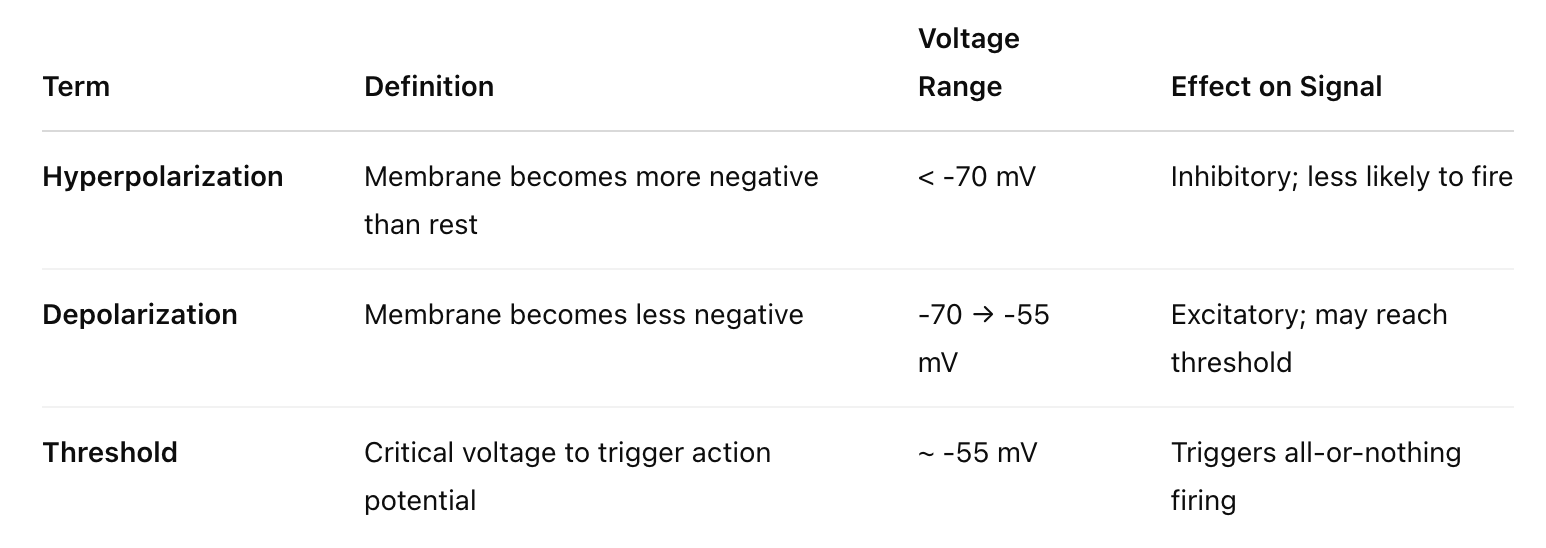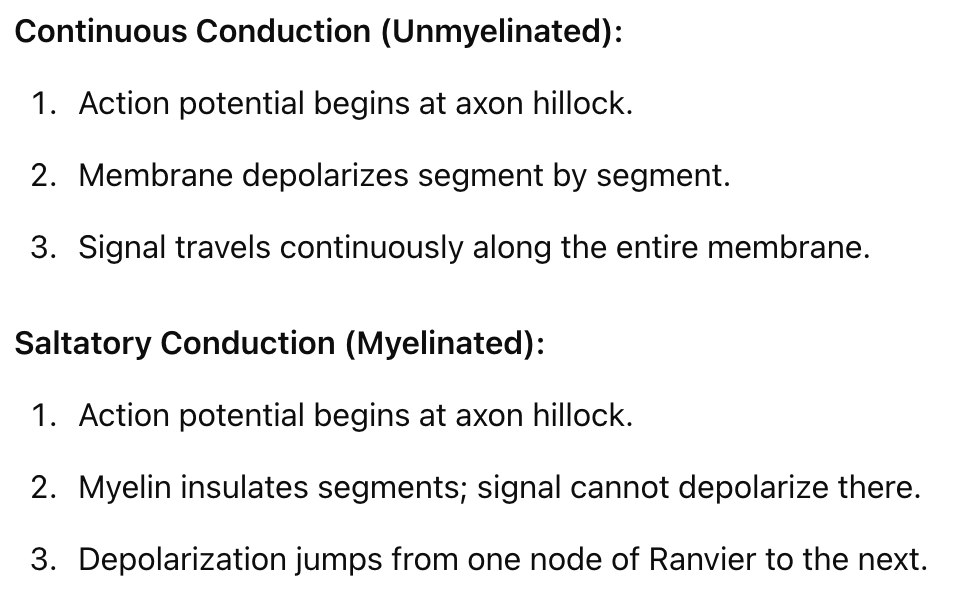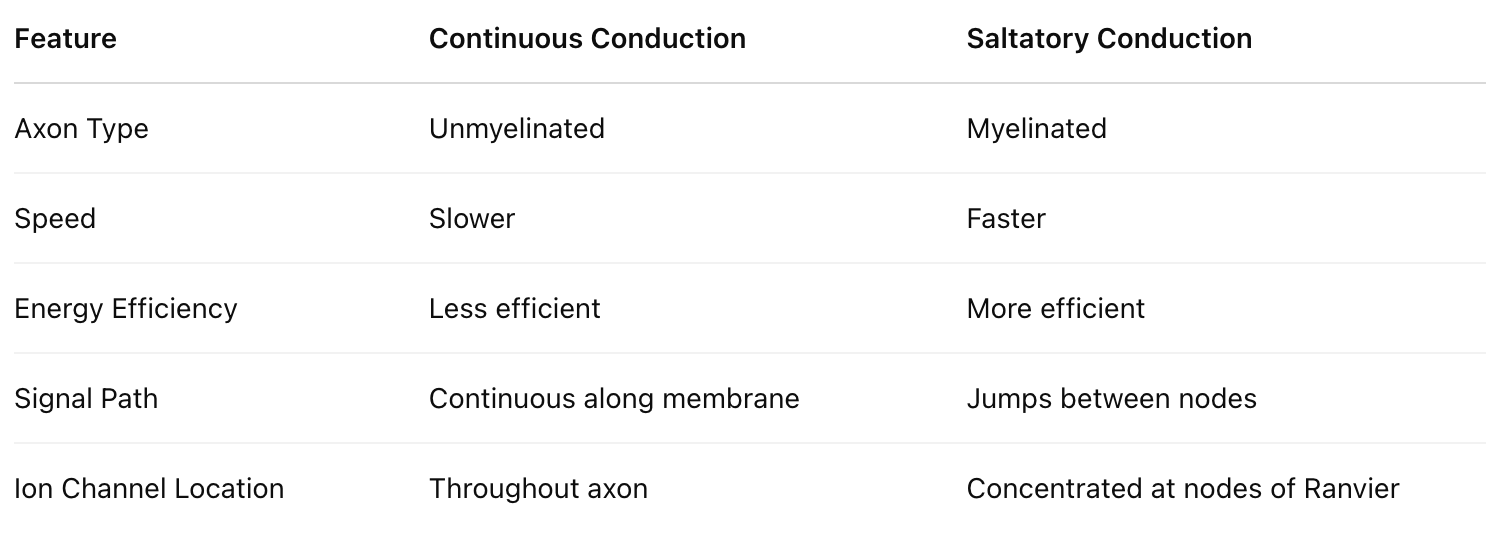Topic 17- Action Potentials
1/35
There's no tags or description
Looks like no tags are added yet.
Name | Mastery | Learn | Test | Matching | Spaced |
|---|
No study sessions yet.
36 Terms
What is a neuron?
A nerve cell specialized to conduct electrical signals in one direction.
What does the cell body (soma) contain?
The nucleus and organelles.
What is the function of dendrites?
Receive incoming signals/stimuli.
What does the axon do?
Transmits the signal away from the cell body.
What is the axon hillock?
The base of the axon where the action potential is initiated if the threshold is reached.
What are synaptic terminals?
Ends of axon branches that release neurotransmitters to the next cell.
What is a nerve?
A bundle of axons from many neurons.
Why can’t ions freely diffuse through the membrane?
They are charged and require channels or pumps.
What are two types of ion transport?
Passive (via ion channels) and active (using ATP, like the Na⁺/K⁺ pump).
What does the sodium-potassium pump do?
Pumps 3 Na⁺ out and 2 K⁺ in using ATP.
What is membrane potential?
The voltage difference across a cell membrane due to ion distribution.
What is the resting potential of a neuron?
Typically -60 to -80 mV (commonly cited as -70 mV).
What causes hyperpolarization?
The membrane becomes more negative than resting potential.
What causes depolarization?
The membrane becomes less negative, approaching threshold.
What is threshold potential?
Around -55 mV; if reached, it triggers the action potential.
What happens when the neuron reaches threshold?
Voltage-gated Na⁺ channels open, and Na⁺ floods in → depolarization.
What is the peak voltage during an action potential?
About +35 mV.
What opens after Na⁺ channels?
Voltage-gated K⁺ channels, allowing K⁺ to exit → repolarization.
What is the refractory period?
A time when the neuron cannot fire another action potential.
What causes the undershoot (hyperpolarization)?
K⁺ channels stay open too long, making the inside more negative than -70 mV.
How is the gradient reset after an action potential?
The sodium-potassium pump restores ion gradients using ATP.
Where does the action potential start?
At the axon hillock.
What prevents the signal from traveling backward?
The refractory period.
What is continuous propagation?
Signal conduction in unmyelinated axons, moving smoothly along the axon.
What is saltatory propagation?
Signal jumps between nodes of Ranvier in myelinated axons.
Why is saltatory propagation faster and more efficient?
Because the signal only depolarizes at nodes, reducing energy use.
What are nodes of Ranvier?
Gaps in the myelin sheath rich in Na⁺/K⁺ channels where depolarization occurs.
Compare and contrast neuron structures with their specific function and key features.

Sequence the process of generating a membrane potential in 5 steps.

Hypothesize and diagnose the impact of variability on the generation of a membrane potential.
These are the variables:
sodium pottasium pump fail
increased extracellular K+
More Na+ channels open at rest
Blocked leaky K+ channels

Compare and contrast hyperpolarization, depolarization, and threshold in their definition, voltage range, and their effect on signal.

Sequence action potentials in 6 steps.

Hypothesize and diagnose the impact of variability on action potentials
These are the variables:
Na⁺ channels blocked
K⁺ channels open early
Threshold is raised (e.g., -40 mV)
Na⁺ influx is slowed

Sequence the processes of continuous and saltatory conduction. Both processes are 3 steps each.

Compare and contrast continuous and saltatory conduction in terms of their axon type, speed, energy efficiency, signal path, and ion channel location.

Hypothesize and diagnose the impact of variability on continuous and saltatory conduction.
These are the variables:
Myelin is degraded
Nodes too far apart
Extra ion channels in myelinated regions
Increased axon diameter (unmyelinated)
